#Zhou dynasty
Text



~ Jade Bird Subduing Two Snakes.
Place of origin: China
Period: Zhou dynasty, Warring States period
Date: 475-221 B.C.
#ancient#ancient art#history#museum#archeology#asian arts#archaeology#jade#bird subduind two snakes#bird#snakes#china#chinese#zhou Dynasty#Warring States period#475 b.c.#221 b.c.
623 notes
·
View notes
Text
Mandate Of Heaven And Supreme Justice
In the Zhou dynasty, the concept of the Mandate of Heaven, revolutionary for Chinese philosophy, emerged and took root for millennia. According to the then political-religious narrative, the Mandate of Heaven was given to the most worthy and righteous one. While from the very beginning it served as an encouraging rationale for overthrowing the Shang dynasty, more and more ambiguities arose as the…

View On WordPress
#ancient China#anthropology#Chinese culture#Chinese customs#Chinese history#Chinese philosophy#Mandate of Heaven#philosophy#Shang dynasty#Spring and Autumn period#traditional society#Zhou dynasty
54 notes
·
View notes
Text
Time Travel Question 11: Ancient History IV and Earlier
These Questions are the result of suggestions from the previous iteration.
This category is for suggestions made too late to fall into the correct grouping.
Please add new suggestions for this category below if you have them for future consideration.
#Time Travel#Bruniquel Cave#Neanderthals#Cueva de las Manos#The Cahokia Mounds Culture#Pre-Black Sea Cultures#Linear B#Indus Script#Nemetona#Sarcosuchus#Zhou Dynasty#Stonehenge
189 notes
·
View notes
Text
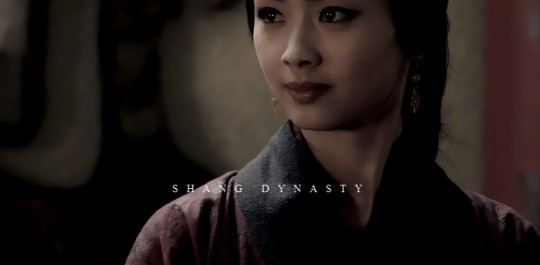
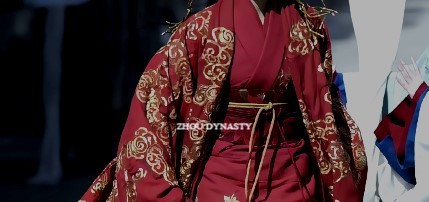


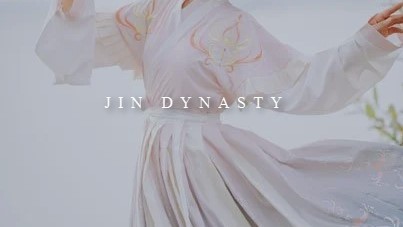

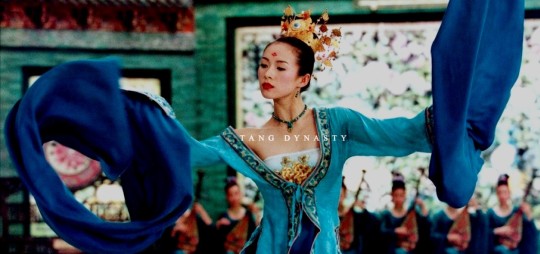


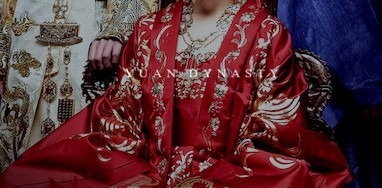

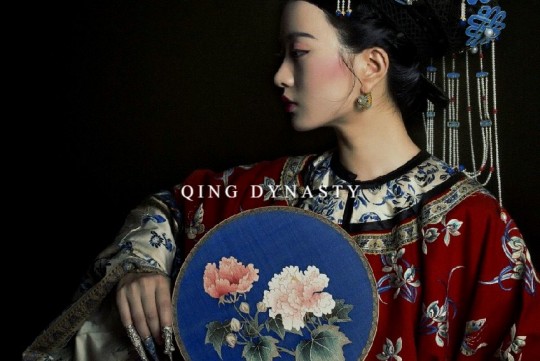
Chinese Dynasties.
Shang | Zhou | Qin | Han | Jin | Sui | Tang | Liao | Song | Yuan | Ming | Qing
#qing dynasty#han dynasty#qin dynasty#shang dynasty#ming dynasty#zhou dynasty#tang dynasty#yuan dynasty#song dynasty#jin dynasty#sui dynasty#liao dynasty#story of yanxi palace#ruyi's royal love in the palace#empress ki#house of the flying daggers#legend of xiao chuo#red cliff#zhao wei#the king's woman#legend of haolan
146 notes
·
View notes
Text
Confucianism has been shaping Chinese culture for over 2000 years. Emphasizing moral principles and societal harmony, over the years its influence has spread beyond China’s borders.
24 notes
·
View notes
Video

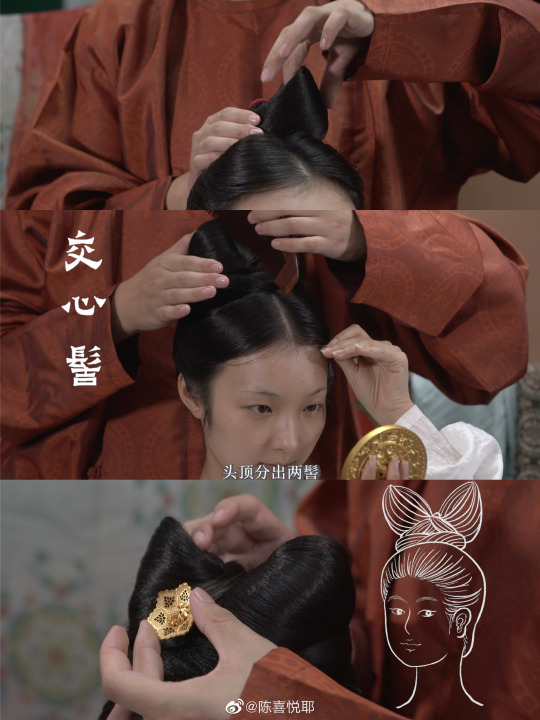
【STEP 1】 use your comb to brush your hair into a "交心髻/cross-heart bun"

【STEP 2】 Drawing your eyebrow into a "连心眉/连眉 or 阔眉”, Zhou dynasty 武周时期 (690–705),which is Wu Zetian period, This kind of eyebrows was very popular in Wu Zetian period.The front part of the eyebrows are almost connected, so it is called "连心眉”
--
【STEP 3】Apply rouge (胭脂) on the cheeks of the face coat with lead powder
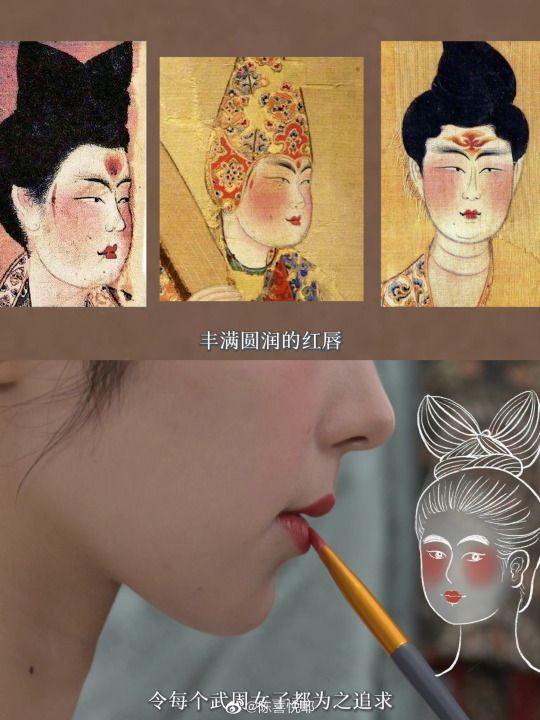
【STEP 4】Apply Red lip Grease, plump and round red lips are the pursuit of every woman in Wu Zetian period.

【STEP 5】: Draw XieHong (斜红/ Xié hóng ) & Draw Huazi / Huadian (花子/ 花钿)
Xie Hong is a special kind of face decoration in ancient times. When dressing up, a red crescent is drawn on both sides of a woman’s eyes.
Huazi / Huadian Is a form of traditional Chinese ornamental forehead makeup, which is located between the eyebrows and sometimes on the cheeks

【STEP 5】: Wear “直领大襟短衫” & “背子 / 唐背子”
背子 / 背子: Refers to short-sleeved or sleeveless tops, It can be worn with the top hem putting in the outside or putting in the inside the skirt.


【STEP 6】: Wear “间裙/间色裙 ( inter-color skirts ) ”
In the Wei and Jin Dynasties, there were already have inter-color skirts, which were popular until the Sui and Tang Dynasties.
Cut two-color or multi-color fabrics into strips that are narrow at the top and wide at the bottom stitched together.
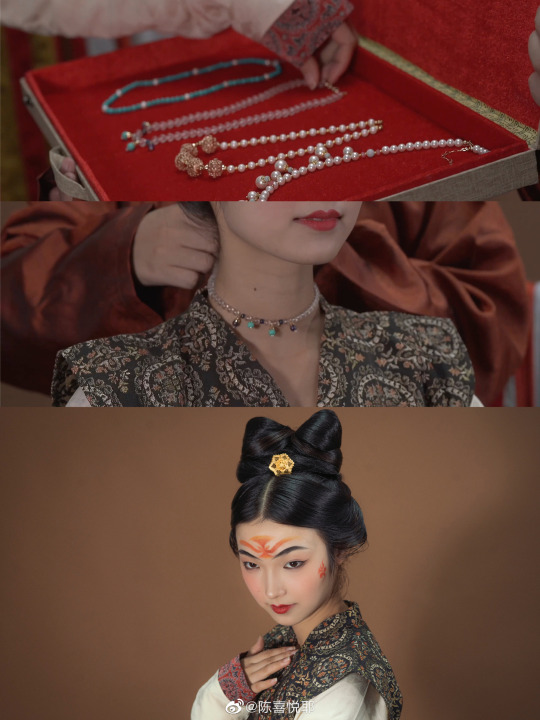
【STEP 7】:Put on a necklace, Finish


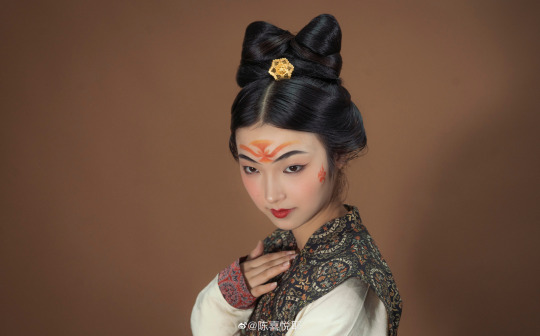
[Hanfu · 漢服]The Morning of Noble Women in Zhou Dynasty (Wu Zetian period)——How women of the Tang Dynasty Overcame Double Ninth Festival
------------
In the Tang Dynasty, chrysanthemums had not yet cultivated complex varieties. White, yellow, pink-purple daisies may be common chrysanthemums in the Tang Dynasty.
Worship ancestors and gods, watching chrysanthemums, and wear the zhuyu (茱萸) plant Cornus officinalis. (Both chrysanthemum and zhuyu are considered to have cleansing qualities and are used on other occasions to air out houses and cure illnesses.),eat Double Ninth Cake, hold a banquet, climb mountains and pray for luck, these are the customs of the Double Ninth Festival in ancient times.
_______
Plan:@ 陈喜悦耶、@象罔境
📸Photo: @象罔境
🧚🏻Model/Copywriting/Voiceover/Editing :@陈喜悦耶
💄Makeup: @象罔境 、@赵长月er
Carpet : @贞观唐荟要
🔗Weibo:https://weibo.com/6425876323/M8CwizPTt
_______
#chinese hanfu#Double Ninth Festival#Chong Yang Festival#Wu Zetian period#Zhou Dynasty#Tang Dynasty#hanfu accessories#China History#traditional Chinese holiday#chinese historical fashion#chinese traditional clothing#chinese culture#chinese art#chinese makeup#chinese history#chinese style#historical fashion#重陽節#重阳糕#武周贵族女子的清晨#唐代靓女如何过重阳#陈喜悦耶#象罔境#赵长月er#贞观唐荟要#漢服#汉服
311 notes
·
View notes
Text
Wu Zetian
Wu Zetian, the first and only female ruler of Imperial China, lived a life marked by ambition as well as controversy. Born into a wealthy family in 624 CE, Wu was encouraged by her father to pursue education, an uncommon privilege for girls in ancient China. Selected as a concubine for Emperor Taizong at age 14, Wu's intellect and charm quickly captured the emperor's attention, leading to her elevation to the position of secretary.
Her rise to power was gradual yet strategic. Despite being sent to a convent after Taizong's death, Wu's affair with Taizong's son, Gaozong, secured her return to court as his empress consort. With Gaozong's declining health, Wu's influence grew, and she effectively ruled as the power behind the throne, manoeuvring court politics to eliminate rivals and solidify her position.
Wu's reign was marked by significant reforms and achievements. She restructured the government, reduced bureaucracy, and implemented policies to improve agriculture, education, and military efficiency. However, her later years saw a decline in her hold on power, characterised by paranoia, scandalous affairs with young lovers, and purges within her administration.
In 704 CE, Wu was forced to abdicate in favour of her son Zhongzong due to mounting discontent among court officials. After her death in 705 CE, real power shifted to Empress Wei, who played a role in influencing Zhongzong and the court.
Despite controversy surrounding her reign, Wu's legacy endures. Modern historians acknowledge her as a visionary leader whose reforms laid the groundwork for China's prosperity under Emperor Xuanzong. While remembered for her supposed crimes, including the rumoured murder of her daughter, Wu's impact on Chinese history remains profound, inspiring continued fascination and debate about her rule and legacy. She ruled during the Tang Dynasty and establishing her own Zhou Dynasty, leaving an indelible mark on the history of China.
I also highly suggest watching the series on YouTube by Extra History
youtube
this is the link for part 1 ^
#wu zetian#chinese empress#chinese history#tang dynasty#zhou dynasty#imperial china#empress#women in history#women throughout history#Youtube
8 notes
·
View notes
Text
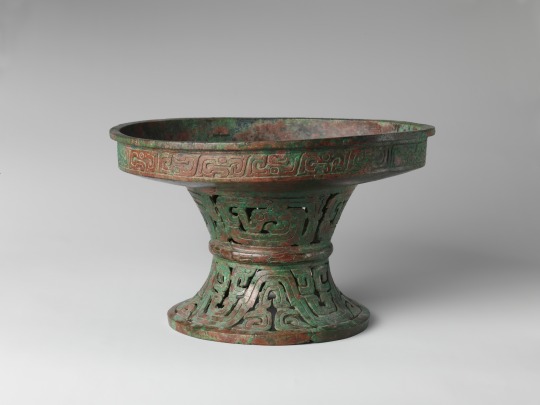
Food serving vessel (Pu), late 9th–early 8th century BCE
Western Zhou dynasty (1046–771 BCE), China
Bronze
H. 6 1/8 in. (15.5 cm); Diam. 9 1/2 in. (24.1 cm)
Collection of the Metropolitan Museum of Art
#Chinese#bronze#Western Zhou dynasty#zhou dynasty#art#art history#9th century bce#8th century bce#The Met#metropolitan museum of art#metal
6 notes
·
View notes
Text

Bronze bell, Eastern Zhou Dynasty, China, 5th century BC
from The British Museum
46 notes
·
View notes
Text


Bell of Zong-zhou [China, Late Western Zhou dynasty (857-828 B.C.)]
7 notes
·
View notes
Text
5 notes
·
View notes
Text

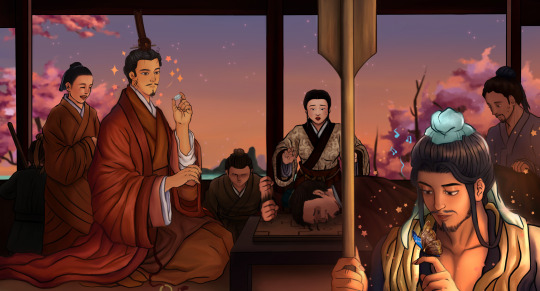
Song of the Yue Boatman
今夕何夕兮, What evening is this
搴舟中流。 that I take a boat into the stream?
今日何日兮, What day is this
得與王子同舟。 that I share a boat with my prince?
蒙羞被好兮, Shy am I for having taken to you,
不訾詬恥。 I fear not the shame of denunciation.
心幾頑而不絕兮, My longing is intense and without let,
得知王子。with thoughts only for my prince.
山有木兮木有枝, The mountains have trees, the trees branches,
心悅{君兮君不知。 my heart has spoken to my lord, my lord does not understand.
#art#artists on tumblr#hanfu#warring states period#song of the yue boatman#idk what else to add#my art#prince of E#yue boatman#zhou dynasty
70 notes
·
View notes
Text

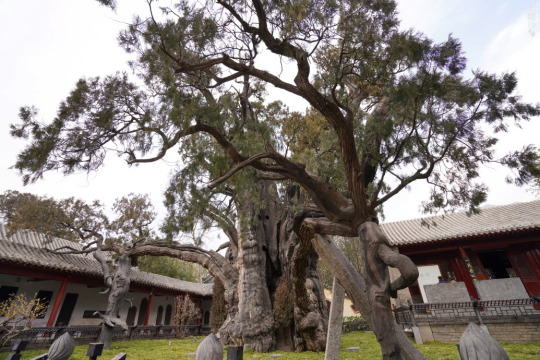

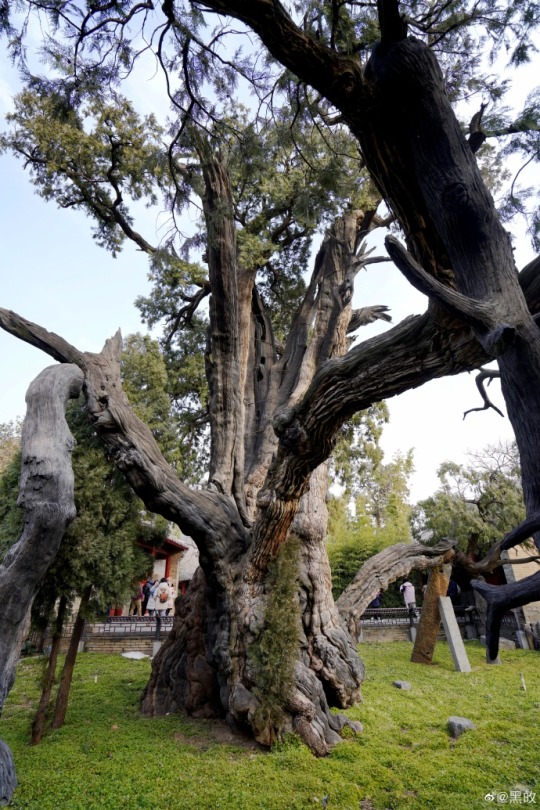

Second General: Shang Dynasty Cypress
According to legend, in 110 BC, when Emperor Wu (漢武帝) of the Han Dynasty visited Mt. Song (嵩山) in Zhongyue, he discovered three huge cypresses towering towards the sky. Emperor Wu named these lush ancient trees “Great General” (大將軍), “Second General” (二將軍) and “Third General” (三將軍) respectively.
This is so-called “Second General” cypress, probably, the thickest one, with a diameter of nearly 5 meters and a circumference of more than 13 meters. According to expert evaluation, the age of the tree is about 4500 years or more.
Located in Songyang Academy (嵩陽書院).
Photo: ©黑敀
#ancient china#chinese culture#shang dynasty#shang#Zhou dynasty#han dynasty#chinese mythology#ancient trees#cypress#old trees#Emperor Wu#evergreen trees#trees#greenery
52 notes
·
View notes
Photo

Pig, 1045–256 B.C. Zhou dynasty, China.
Courtesy of The Cleveland Museum of Art
23 notes
·
View notes
Photo

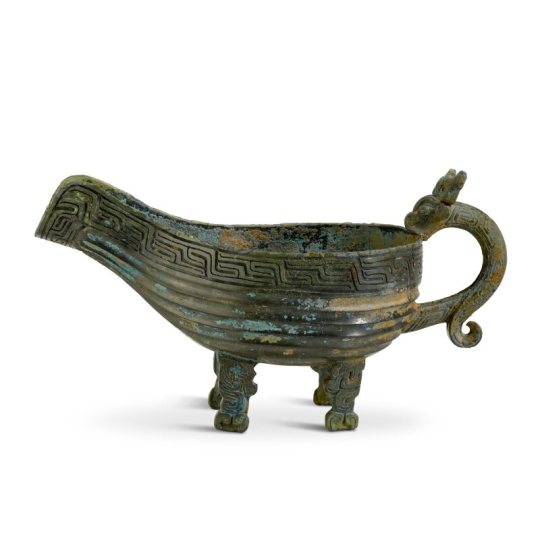

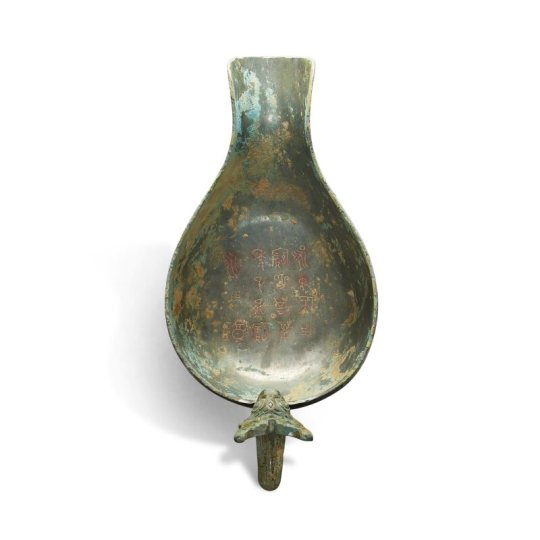
An inscribed archaic bronze pouring vessel
Zhou dynasty
The boat-shaped vessel raised on four dragon-shaped feet and set with a curved U-shaped spout, the exterior cast with horizontal concave ribs with a wide band of zoomorphic S-shaped motifs below the rim, set to one side with a loop handle formed by the arched body of a ferocious mythical beast with elaborate horns and a coiled tail, the interior cast with a fifteen-character inscription reading Yang Zhong Hou zuo baoyi, qi wannian zisun baoyong yongxiang, which can be translated as 'Yang Zhong Hou made this precious yi, to be treasured for ten thousand years, and for the eternal use of his sons and grandsons'.
34.9 cm.
#An inscribed archaic bronze pouring vessel#zhou dynasty#archeology#archeolgst#ancient artifacts#history#history news#ancient history#ancient culture#ancient civilizations#bronze#ancient bronze#ancient china#chinese history
28 notes
·
View notes
Text
Ancient China’s history is long and fascinating. From its nomadic beginnings millennia ago to flourishing dynasties rich in art, culture, and amazing technological advancements. This enduring legacy continues to shape China's identity today.
#Han Dynasty#Shang Dynasty#Zhou Dynasty#Confucianism#Terracotta Army#ancient#history#ancient origins
13 notes
·
View notes